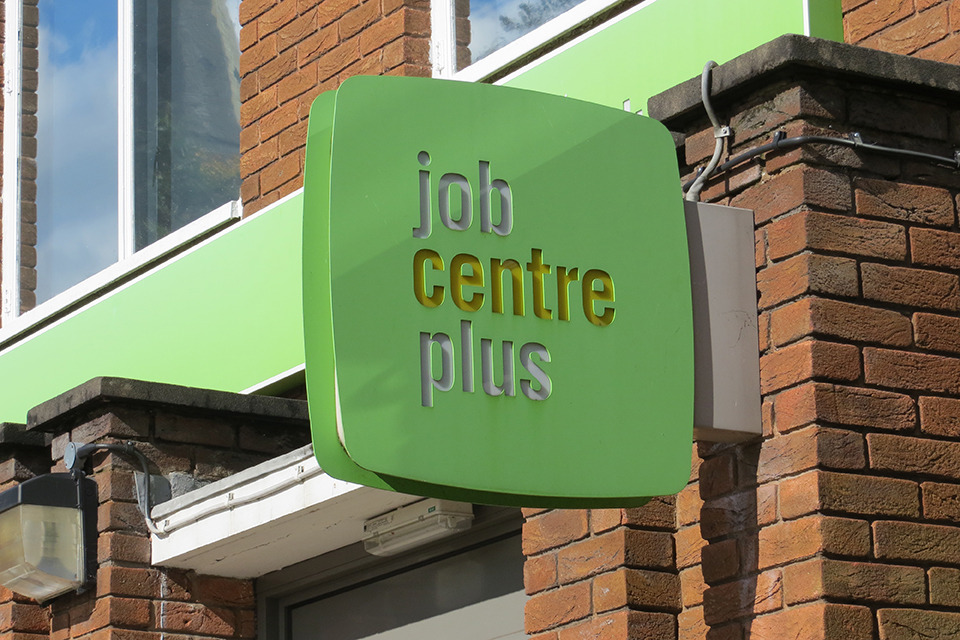In a town gaining 40,000 extra citizens each decade, the council’s strategy chief Geoff Snelson tells PublicTechnology why smart-city ideas and technology need to be an intrinsic part of planning for the short- and long-term future
Credit: Rui Vieira/PA Wire/PA Images
By the age of 50, it is not uncommon to be some way into the gradual and contented expansion of middle-age spread.
Milton Keynes is no exception. The town – which has remained unsuccessful in its repeated bids to attain city status, despite what the nomenclature used by the council and many others may indicate – has grown steadily in recent years.
In 1967 a handful of towns, villages, and surrounding farmland in the north of Buckinghamshire were incorporated and designated as a new town – with the plan of building, essentially from the ground up, a conurbation fit for habitation by a quarter of a million people. It took the name of a pretty, historic village about three miles east of what is now the town centre: Milton Keynes.
Within 15 years the area now covered by the Borough of Milton Keynes unitary authority had doubled its starting population of about 60,000 (pictured below left is Milton Keynes in 1981, when the population was 126,000). By the time of the town’s 30th birthday in 1997, it had a little under 200,000 residents. Five years later this had shot up to 215,000, and five years after that more than 230,000 called Milton Keynes home.
As of last year – which marked the occasion of the town’s 50th birthday – the population had reached about 270,000. The figure is expected to top 300,000 by 2026. By the midpoint of the 21st century, Milton Keynes Council expects that over 400,000 citizens will be under its jurisdiction, according to Geoff Snelson, the authority’s director of strategy and futures.
With an average of around 4,000 people moving to Milton Keynes each year, one of the ways that the town is preparing for this continued growth is by embracing smart-city ideas and technologies. Speaking to PublicTechnology last year, Snelson claims that this has been fuelled by both a desire to improve public services and boost the private sector economy.
There are a lot of smart platforms which host data, and people sit back and expect some magic to happen – but a lot of the data is rubbish
“It is about addressing the problem of sustained growth, as well as creating jobs,” he says. “As a fast-growing place, we need to develop our high-knowledge jobs much more strongly – creating economic value – as well as find ways to cope with the pressure on infrastructure.”
He adds that the town wants to foster an environment where local government, academia, and commercial industry – both start-ups and large multinationals – work together to understand, define, and, ultimately, solve the challenges of being a fast-growing city.
“[We are looking at] how could universities be more active in technology and helping create employment in relevant sectors, as well as address infrastructure pressures in energy, transport, and water,” Snelson says. “We have integrated the smart-city programme in our city strategy, rather than it being just on the side. That [strategy] is looking at the long-term future, up to 2050. Things like the carving out of jobs, and the sort of jobs they are. We need to get ahead of that.”

He adds: “We do not know how this technology is going to impact [employment] – AI may reduce the need for some jobs, but may create others. It is about creating the partnerships so that, wherever it goes, we have a fighting chance.”
The government recently tasked Milton Keynes South MP Iain Stewart with championing the Cambridge-Milton Keynes-Oxford corridor as a hub of technology-sector activity. He began by pledging to work to “transform the corridor into the UK’s answer to Silicon Valley”.
When asked if the smart city projects of recent years are, in part, aimed at promoting Milton Keynes to be seen as a technology centre of excellence, Snelson says: “It is fair to say that is one of our objectives”.
“We are trying to create an environment here that is interesting for tech companies, and people with all sorts of skills that want to be in a creative environment,” he says. “[It is about] projecting ourselves globally as a place where people can go to talk about new technology.”
Smart start
In late 2013 Milton Keynes kicked off MK:Smart, a three-year, £16m project aimed at coming up with ways of managing the town’s rapid growth. Half of the funding was provided by the Higher Education Funding Council for England, with the remainder supplied by the council, and a consortium of partners led by the Open University, and backed by lead technology partner BT.
The scheme drew to its scheduled conclusion at the end of 2016, but the council and its partners have decided to continue investing the requisite time and money “to keep the core of the project going”, Snelson says.
The main goals of the project included examining how technology and data could improve the quality, efficiency, or scalability of services in three key areas: transport; energy; and water. The scheme also aims to promote the development of technology businesses, encourage citizens to generate innovative ideas and solutions, and better educate people, public entities, and businesses on smart cities.
The final of the scheme’s seven focus areas is perhaps its cornerstone: data.
At the project’s outset the MK:Data Hub was created, a site which pulls together real-time and static data from environmental sensors, and statistics provided by both government and private-sector organisations. The 230 data sets currently housed on the platform include information on weather, education, traffic, crime, and energy. This data is openly available for access and use by individuals or companies, with the aim that it can be used to develop applications or initiatives that could benefit the town and its citizens.
Snelson stresses that the data is aggregated before being added to the hub – meaning that it has been clearly filtered, categorised, and presented in a way that enables it to be much more easily interpreted and put to use.
“The data hub has allowed the interpretation of data from live and static feeds,” he says. “There are a lot of smart platforms which host data, and people sit back and expect some magic to happen – but a lot of the data is rubbish. What this allowed the OU was [access to] aggregated data.”
The Open University’s Knowledge Media Institute – alongside local business Neuro Physio Direct – has used the data to create the MK Health Map. The heat map-style application shows which areas of the town have the highest instances of very bad – or very good – health, according to census data. It also contains information on the location of GP surgeries.
Another of the applications created off the back of the data hub is MK Insight, a site developed by Milton Keynes Council as “a one-stop-shop for sharing documents, information and data” between the local authority and the citizens it serves. It also “provides tools for exploring these data [sets] both in their original form, and in convenient charts and maps”.
AI may reduce the need for some jobs, but may create others. It is about creating the partnerships so that, wherever it goes, we have a fighting chance
Still in a comparatively early stage of development is MotionMap, a smartphone application designed to use sensor data to provide users with real-time information on traffic and public transport.
“I know there are products like that out there, but the data lags. And, when you’re in a city where you can get from one side to the other in 20 minutes, a lag of 10 minutes makes a big difference,” Snelson says. “For strategic and city planning managers, [this could] make a big difference. But also it can make the city easier to navigate [for citizens].”
He adds: “If we get MotionMap right, and get it to maturity, that could help us manage movement more easily – we cannot just keep building roads.”
Data for the application, if it reaches fruition, will be provided by sensor and analytics technology from UK-based AI camera specialist Vivacity Labs, which last year secured a £1.7m grant from Innovate UK to deploy 2,500 sensors throughout Milton Keynes, monitoring and feeding back information on all major road junctions and every parking space throughout the town.
In pod we trust
Another transport innovation being driven by Milton Keynes is the use of driverless ‘pods’ as a means of public transport. The development of the vehicles was overseen by the Transport Systems Catapult set up by Innovate UK. The pods, which seat two people, were built by Coventry-based manufacturer RDM Group and run on software developed by the Oxford Robotics Institute.
Three of the vehicles (pictured right) have been trialled on the walkways, cycleways, and underpasses that form a grid leading north east of the station towards the business and retail hub of the town. The use of these vehicles has been helped by a 50-year-old city-planning idiosyncrasy, Snelson reveals. 
“The underpasses were not categorised – they were still technically roads. That allowed us to say that they are still roads – but only pods are allowed on them,” he says.
Milton Keynes is looking to create a “mobility-as-a-service model”, Snelson says, allowing visitors to the city to use the pods to make journeys between the station and locations in or near the town centre and surrounding business district. The plan is that 40 pods will go into operation as public taxis later this year.
“What we have to work out is the economics, and we need to understand what kind of service people need,” Snelson says.
Of course, the aim is that, however Milton Keynes moves forward with smart-city technologies and ideas, the benefits will ultimately be felt by the town’s citizens. And those citizens have already been involved in creating and realising the ideas and initiatives that will shape the town’s future.
Part of the MK:Smart project, the Our MK scheme offered individuals or groups of local residents funding of up to £5,000 “to develop technology-centred ideas which might have an impact on issues of sustainability around Milton Keynes”. The chosen ideas also received advice and technical support.
Some 13 schemes have been funded over the past few years. These include:
- The Milton Keynes Indie Food Passport, which provided information and customer discount stamps for various independent food outlets.
- A mobile pop-up shop which visited deprived areas offering affordable recycled or upcycled furniture.
- A “digital treasure hunt” that used geofencing technology to encourage people to get out and about and use the town’s network of ‘redway’ cycle and footpaths.
- Another scheme designed to help people use the redways to get around the city, and flag up points of interest on major routes.
- An app to allow citizens to record and report problems with the redways – such as broken lights or overgrown foliage.
- An initiative promoting the use of off-grid electricity for lighting homes.
- The drilling of a borehole to provide off-mains water to allotments in the village of Woughton on the Green.
- The Breastfeeding Hub App, designed to offer new mothers information and support, as well as a map containing the best locations in the town for breastfeeding.
- Workshops across Milton Keynes using the Raspberry Pi platform to try and teach parents basic computing skills.
- A project to trial the use of Bluetooth ‘beacons’ to help visually impaired people navigate the Centre:MK shopping centre and its environs.
- A scheme to both deliver blankets and gather information on how residents of the Lakes Estate could be helped to access online services.
- A project aimed at reducing food waste by selling certain dried goods in refillable containers, which buyers can use to purchase only what they need – instead of the prescribed amount sold by a retailer.
- An “age-friendly” digital map of the town centre aimed at reducing loneliness and exclusion by making it “easier for older people to visit the city centre to participate in art and cultural activities”.
Snelson says that, for those running Milton Keynes, homegrown, locally focused ideas such as these – which are, primarily, designed to “improve wellbeing” – can be every bit as valuable as grander concepts of how to create the city of the future.
“It isn’t always about finding cheaper ways of delivering public services,” he says.
“It is about finding ways of living better, healthier, happier lives.”



